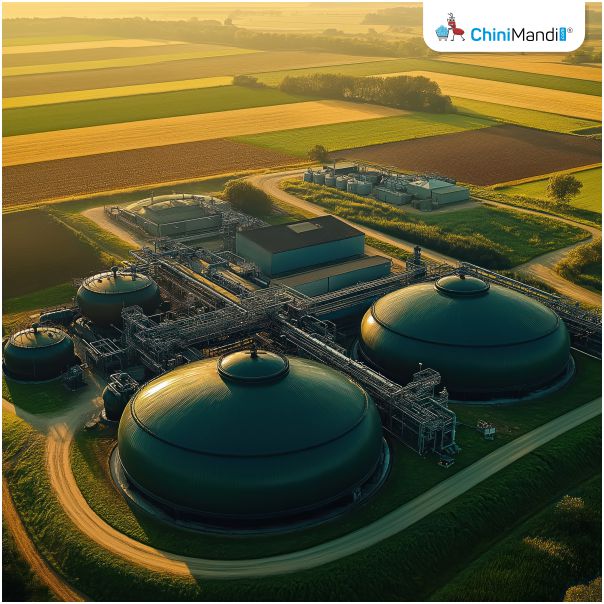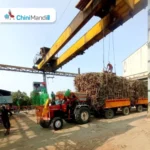Compressed Biogas (CBG) production from Municipal Solid Waste (MSW) is emerging as a promising solution for India’s waste management and clean energy goals. While metro cities are already exploring large-scale CBG projects, the next big frontier lies in Tier-2 cities, which generate significant waste yet face infrastructure and investment gaps. The viability of CBG production in these regions can be enhanced by improving technology, receiving regulatory support, and meeting the growing demand for alternative fuels.
The Growing MSW Burden in Tier-2 Cities
India generates more than 160,000 tonnes of municipal solid waste (MSW) every day, with a substantial portion coming from Tier-2 cities such as Kanpur, Bhopal, Coimbatore, and
Ludhiana. For example, Kanpur alone produces around 1,500 tonnes of waste daily, while cities like Bhopal and Coimbatore contribute over 1,000 tonnes each. Unfortunately, much of this waste ends up in unmanaged landfills, contributing to methane emissions, groundwater contamination, and public health risks.
Unlike Tier-1 cities, which have gradually adopted structured waste segregation and processing systems, Tier-2 cities still struggle with inadequate infrastructure. This results in missed opportunities to recover energy and valuable by-products from biodegradable waste, which often forms 45% to 60% of total MSW.
A Green Alternative, Biogas from Waste
Biogas, produced through the anaerobic digestion of organic material, can be purified to meet the standards of commercial CNG. The resulting fuel, Compressed Biogas, is clean, renewable, and suitable for diverse uses such as automotive fuel, cooking, heating, and power generation.
For Tier-2 cities, adopting biogas technology presents a win-win scenario. It diverts organic
waste from landfills, reduces emissions, and offers a local, sustainable energy alternative.
Moreover, the process yields nutrient-rich organic slurry, which can be converted into bio-
fertilizer. This not only supports circular economy principles but also benefits peri-urban and rural farmers in the surrounding areas.
Policy Support and Market Demand
Government policies have significantly boosted the viability of biogas production. The SATAT (Sustainable Alternative Towards Affordable Transportation) initiative aims to establish 5,000 CBG plants by 2025, targeting a production of 15 million tonnes of CBG per year. Public sector oil marketing companies such as IOCL, HPCL, and BPCL have signed long-term offtake agreements, offering buyback rates of ₹46–₹55 per kg.
This policy backing offers project developers and urban local bodies (ULBs) the confidence to invest in decentralized energy infrastructure. Several Tier-2 cities, particularly in Uttar Pradesh, Madhya Pradesh, and Tamil Nadu have begun issuing tenders for MSW-to-biogas projects. These regions are benefiting from financial incentives, ease-of-doing-business reforms, and growing awareness around clean fuel adoption.
Why Tier-2 Cities Are Ideal for Biogas Projects
Tier-2 cities offer a unique advantage in terms of project economics and operational feasibility. Firstly, they have abundant feedstock organic waste forms a major part of their MSW stream. Secondly, lower land costs and more flexible zoning regulations make it easier to set up plants close to waste generation points. This helps reduce transportation costs and ensures a timely feedstock supply.
Thirdly, the demand for green fuels is growing. State transport corporations, industrial clusters, and large commercial kitchens are increasingly seeking sustainable energy options. Local public-private partnerships (PPPs) are also gaining traction, with municipalities offering tipping fees, land leases, or capital support to project developers. These factors collectively make Tier- 2 cities not only suitable but also strategically important for scaling biogas production.
Even the MSW projects CEID secured in Ratlam and Devas, Madhya Pradesh, clearly
demonstrate that even smaller cities, with the right government support and technical
expertise, can successfully implement modern waste-to-energy plants. These initiatives
are setting a strong example for other Tier-2 cities to follow, proving that scalable MSW-
to-CBG infrastructure is both viable and impactful.
Addressing the Challenges
Despite the favorable outlook, several barriers must be addressed to make biogas projects
viable in the long term. One of the most pressing issues is the lack of source segregation. Mixed waste significantly lowers biogas yield and increases preprocessing costs. To address this, municipalities need to strengthen household-level waste segregation through behavior change campaigns and enforceable policies.
Another challenge is high initial capital expenditure. A typical 10-tonne-per-day (TPD) plant
requires ₹15 to ₹25 crore in investment, depending on technology and location. Although
returns are steady over time, access to upfront capital remains a challenge, especially for local entrepreneurs. Government-backed soft loans, viability gap funding, and subsidy schemes are gradually filling this gap.
Manpower shortage and lack of technical expertise are also roadblocks, particularly for plant operation and maintenance. However, this is being mitigated by training programs under the Skill India Mission and partnerships with energy solution companies offering O&M services.
A Step Towards Net Zero and Circular Economies
India’s commitment to achieving net-zero emissions by 2070 gives further urgency to adopting renewable energy solutions. Decentralized biogas production in smaller cities aligns well with this goal. It not only contributes to lower greenhouse gas emissions but also supports energy
self-sufficiency and job creation. Each plant can generate local employment in waste collection, plant operations, logistics, and fertilizer distribution.
Further, the integration of MSW management with energy and agricultural inputs creates a localized circular economy, reducing reliance on fossil fuels and chemical fertilizers. It enhances urban resilience and helps cities comply with environmental mandates, including those under the Swachh Bharat Mission and National Green Tribunal orders.
By addressing infrastructure gaps, promoting public awareness, and ensuring financial and operational support, India’s smaller cities can lead the charge in sustainable urban development. In this context, biogas production from MSW is not only viable, it is urgently needed and entirely achievable.
Mr. Prince Gandhi, CEO at CEID Consultants and Engineering Pvt Ltd

















